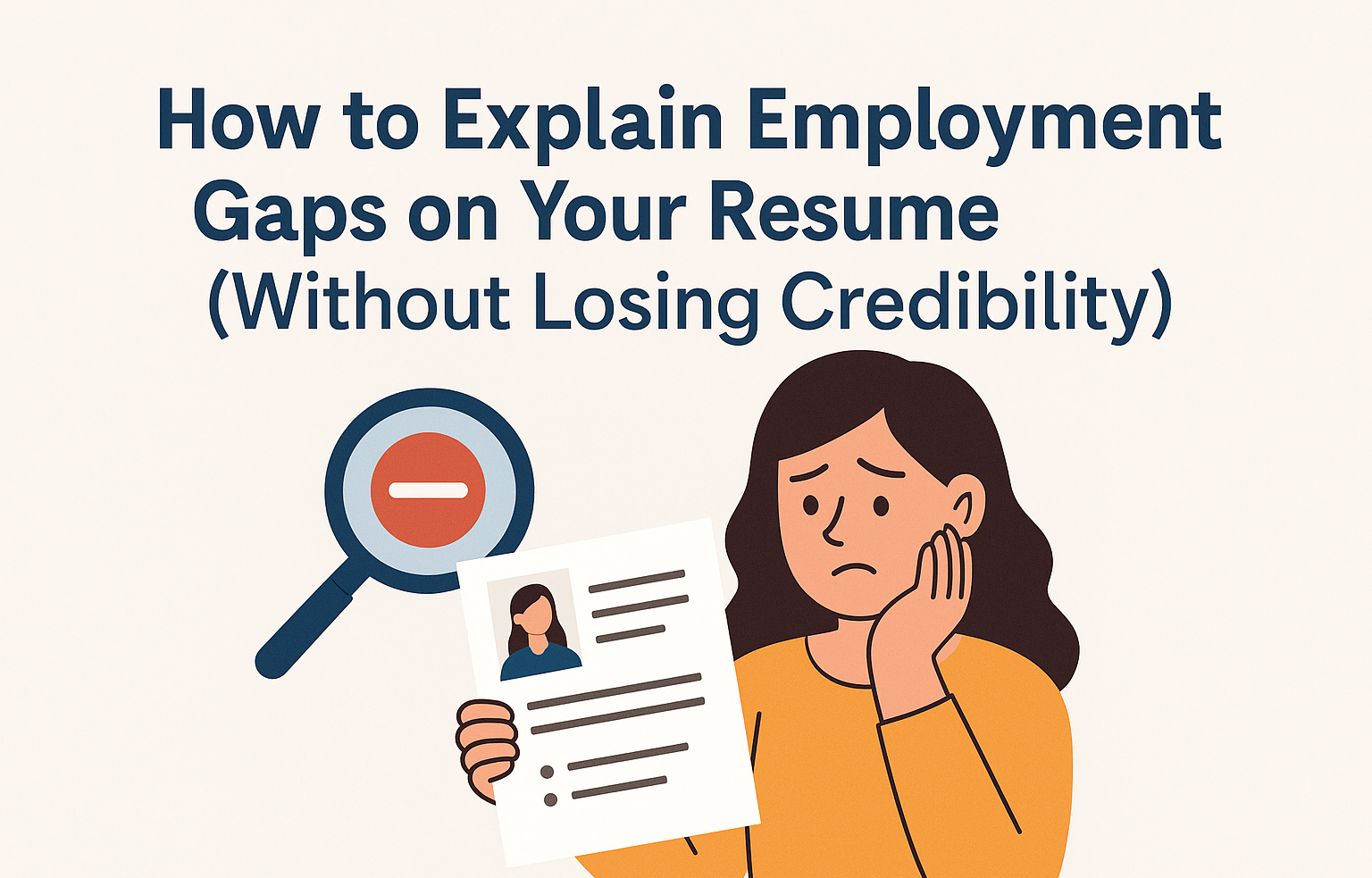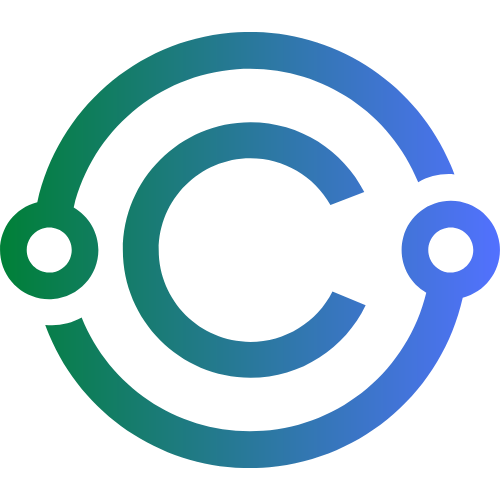How to Explain Employment Gaps on Your Resume (Without Losing Credibility)

Life doesn’t follow a straight line—and neither do most careers. Whether it’s due to layoffs, health issues, caregiving, travel, education, or just burnout, employment gaps happen. But that doesn’t mean they have to hold you back.
The key is how you frame those gaps on your resume, in your cover letter, and during interviews.
In this guide, we’ll break down exactly how to explain gaps in a way that builds credibility, shows self-awareness, and even turns those gaps into strengths. We’ll also share tips, templates, tools, and a real-life case study.
1. What Is an Employment Gap (and What Isn’t)?
An employment gap is a period of several months or years when you were not formally employed.
Common reasons for gaps:
- Layoffs or company closure
- Health or medical issues
- Maternity/paternity leave
- Caregiving for a family member
- Returning to school
- Travel or relocation
- Mental health or burnout recovery
What’s not a gap?
- Job transitions of 1–2 months (completely normal)
- Short freelance or consulting gigs (as long as they’re listed)
2. Should You Hide the Gap or Be Honest?
Short answer: Be honest—but strategic.
Trying to hide gaps often backfires. Hiring managers appreciate transparency—as long as it’s paired with a positive narrative and clear evidence that you’re ready to re-enter the workforce.
Avoid vague labels like "Personal Time Off." Instead, be specific enough to demonstrate purpose, without oversharing.
3. How to Format Employment Gaps on Your Resume
Option 1: Use a Functional or Hybrid Resume Format
- Focus on skills and achievements, not dates
- Group experiences by function (e.g., “Project Management Experience”)
Option 2: Include the Gap Period with a Simple Title
Career Break | Jan 2022–Jan 2023
Took time off to care for a family member while continuing professional development through courses in digital marketing and data analytics.
Option 3: Fill the Gap With Meaningful Activity
- Volunteering
- Freelance work
- Certifications
- Online learning
- Side projects
Recommended Tools:
4. How to Explain Employment Gaps in a Cover Letter
If the gap is recent or significant, address it in your cover letter.
Example Paragraph:
“In 2022, I took a planned six-month sabbatical to travel and volunteer in education programs abroad. During that time, I also completed an online certification in instructional design. I’m now energized and fully focused on applying my skills to a mission-driven role like this one.”
Tips:
- Be brief and positive
- Focus on what you did and what you learned
- Reinforce your enthusiasm and readiness to return
5. How to Discuss Employment Gaps in Interviews
This is often the most stressful part—but it doesn’t have to be.
What hiring managers want to know:
- Why you left
- What you did during the gap
- Why now is the right time to return
Sample Response (Interview):
“After being laid off during a company restructuring, I took some time to support my elderly parent through a health issue. While caregiving, I kept my skills sharp by completing three certifications in cloud computing. I’m now fully available and excited to rejoin a high-impact engineering team.”
6. Turn the Gap Into a Value Proposition
Your gap might have taught you things that make you an even better hire.
Examples:
- Gained resilience, perspective, or emotional intelligence
- Built new technical or soft skills
- Realigned career goals for better focus
- Demonstrated maturity and self-discipline
Use phrases like:
- “I used this time to...”
- “This period helped me...”
- “During this time, I invested in…”
7. Real Examples of Resume Gap Statements
Example 1: Layoff + Upskilling
Career Break | Mar 2023–Oct 2023
Following a corporate layoff, I used this time to complete a UX/UI Bootcamp with CareerFoundry and build a design portfolio that includes mobile apps and e-commerce prototypes.
Example 2: Parental Leave
Parental Leave | Jan 2022–Jan 2023
Took one year to raise my first child while freelancing part-time in digital illustration. I also completed two certifications in Adobe XD and digital storytelling.
Example 3: Health Recovery
Health Sabbatical | Aug 2021–Mar 2022
Took time off for medical treatment and recovery. Fully recovered and currently seeking new opportunities in software engineering.
Example 4: Career Pivot
Career Transition | Feb 2022–Present
Transitioning from teaching to learning and development. Completed Coursera certifications in adult learning theory and instructional design. Built two course prototypes and interned with a nonprofit.
8. Case Study: How Malik Reframed His Resume Gap and Landed a Job
Background: Malik, a project manager in Canada, was laid off during a corporate restructuring. He spent 10 months job hunting but struggled with explaining the gap.
What he did:
- Took a Scrum Master certification
- Volunteered to manage a nonprofit’s digital transformation project
- Added this experience to his resume
- Rewrote his summary to highlight resilience and adaptability
New Resume Summary:
“Certified Scrum Master with 7+ years of experience in tech-driven project delivery. Recently led a volunteer digital transformation project for a nonprofit, increasing platform efficiency by 45%. Looking to bring my strategic mindset to a mission-led tech company.”
Result: Malik was hired as a Senior PM at a clean tech firm in under six weeks.
Takeaway: Strategic action during a gap can build your brand—not break it.
9. What NOT to Do When Explaining a Gap
❌ Lie or cover up the gap
❌ Use vague phrases like “personal reasons” without context
❌ Apologize excessively
❌ Sound unsure or defensive
✅ Do be honest, focused, and show how you stayed engaged.
10. Additional Resources and Support
- LinkedIn Career Break Feature
- Coursera Professional Certificates
- Career Contessa's Gap Guides
- Teal Job Tracker + Resume Builder
- Interview Warmup by Google
Employment gaps are not the red flags they once were. In fact, the modern workplace is evolving to acknowledge that real life happens—and smart hiring managers want great people, not perfect timelines.
If you own your story, back it up with growth, and frame your gap as part of your journey—not an exception to it—you’ll not only recover your momentum, but you might come back stronger than ever.
More from UJ+:
- Resume vs. CV: What’s the Difference and Which One to Use?
- Cover Letter Hacks: What to Say (and What to Skip)
- How to Set Career Goals That Actually Work
Subscribe to UJ+ for weekly resume help, job market insights, and tools to support your next career move.

